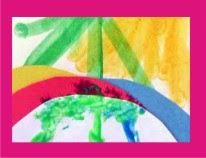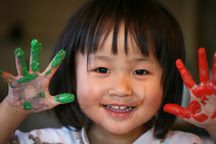Harding is a blend of creativity and diverse types of artist media. For a while she worked in NY as a textile designer. She is now a successful illustrator of children’s books, magazines, greeting cards, giftwrap, calendars, diaries, tableware and textile designs. Her painting style is called Naïve Art. It is a primitive art style of art that is used by self taught artists. Harding brings art to kids by painting with bright colors and simple shapes.
What Kids Can Learn From Harding
(Art for Kids)

Art education should be about creativity and originality. Sophie Harding brings creativity to children with her simple shapes. She is inspired by animals and nature. Children can learn to paint their best friend or pet by using basic shapes. They can draw ovals for heads, circles and triangles for eyes, and squares and rectangles for bodies. Later they can paint with bright colors and add more details.
 Young children can use stencils of shapes or animals. They can trace the forms and then paint with complementary colors. Harding teaches art for kids with simple elements all while they learn about creativity and Naïve style.
Young children can use stencils of shapes or animals. They can trace the forms and then paint with complementary colors. Harding teaches art for kids with simple elements all while they learn about creativity and Naïve style. Sophie Harding: Painter, inspired by "Zara de Zebra", "Nellie the Elephant", "Quirky Animals II and IV:




